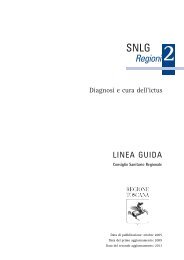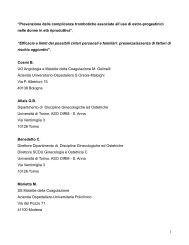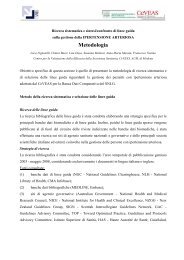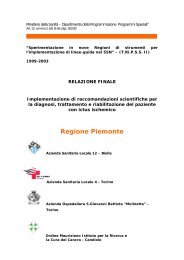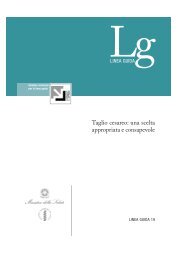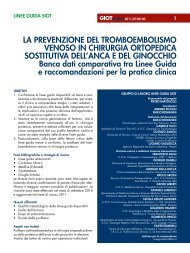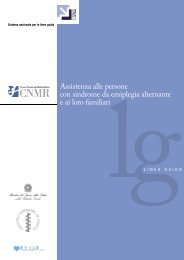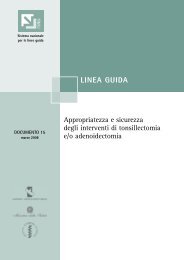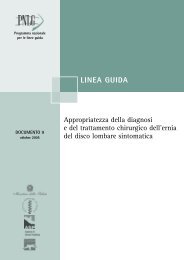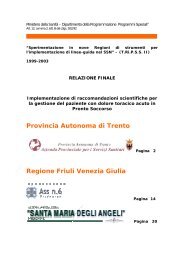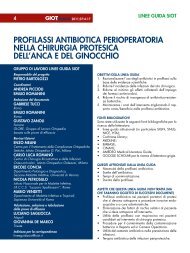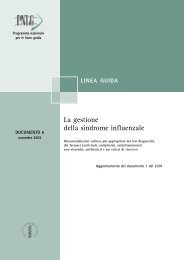Perioperative antibiotic prophylaxis in adults - Sistema Nazionale ...
Perioperative antibiotic prophylaxis in adults - Sistema Nazionale ...
Perioperative antibiotic prophylaxis in adults - Sistema Nazionale ...
Create successful ePaper yourself
Turn your PDF publications into a flip-book with our unique Google optimized e-Paper software.
Thirty-four guidel<strong>in</strong>es were identified, 7 were selected and just 2 <strong>in</strong>cluded as be<strong>in</strong>grelevant to the issues covered <strong>in</strong> this guidel<strong>in</strong>e:• Mariette C, Alves A, Benoist S, Bretagnol F, Mabrut JY, Slim K. So<strong>in</strong>spériopératoires en chirurgie digestive. Recommandations de la Sociétéfrançaise de chirurgie digestive (SFCD1);• Bratzler DW, Houck PM. Antimicrobial <strong>prophylaxis</strong> for surgery: an advisorystatement from the National Surgical Infection Prevention ProjectCl<strong>in</strong>.Infect.Dis (2004).Regard<strong>in</strong>g studies, the research strategy yielded 58 meta-analyses, systematic reviewsand reports and 131 RCTs. A selection was then made of those considered morerelevant and the complete texts were requested. Analysis of these texts led to a furtherselection of 36 systematic reviews or RCTs from which data were extracted.The methodological appraisement and extraction of data <strong>in</strong> each review or RCT wereperformed with the support of the methodological checklist of the National Institutefor Health and Cl<strong>in</strong>ical Excellence (NICE).Level of evidence and grades of recommendationsThe summary tables for each type of study were compiled on the basis of theevidence described <strong>in</strong> the studies exam<strong>in</strong>ed. The tables used by NICE were used, withappropriate adaptations.Levels of evidence and grades of recommendations were assigned follow<strong>in</strong>g thegrad<strong>in</strong>g method described <strong>in</strong> the SNLG29 methodological manual, which envisages 6levels of evidence (I-VI) and 5 grades of recommendation (A-E).Levels of evidence were assigned on the basis of a study’s design and methodologicalassessment; recommendations were graded <strong>in</strong> consideration of both the strength ofthe evidence base and the cl<strong>in</strong>ical value of the actual recommendations. Theseelements were discussed and agreed by the panel.In the current hierarchy of evidence, expert op<strong>in</strong>ion is not rated very highly, but assometh<strong>in</strong>g to which recourse is made when experimental evidence is lack<strong>in</strong>g or <strong>in</strong>



